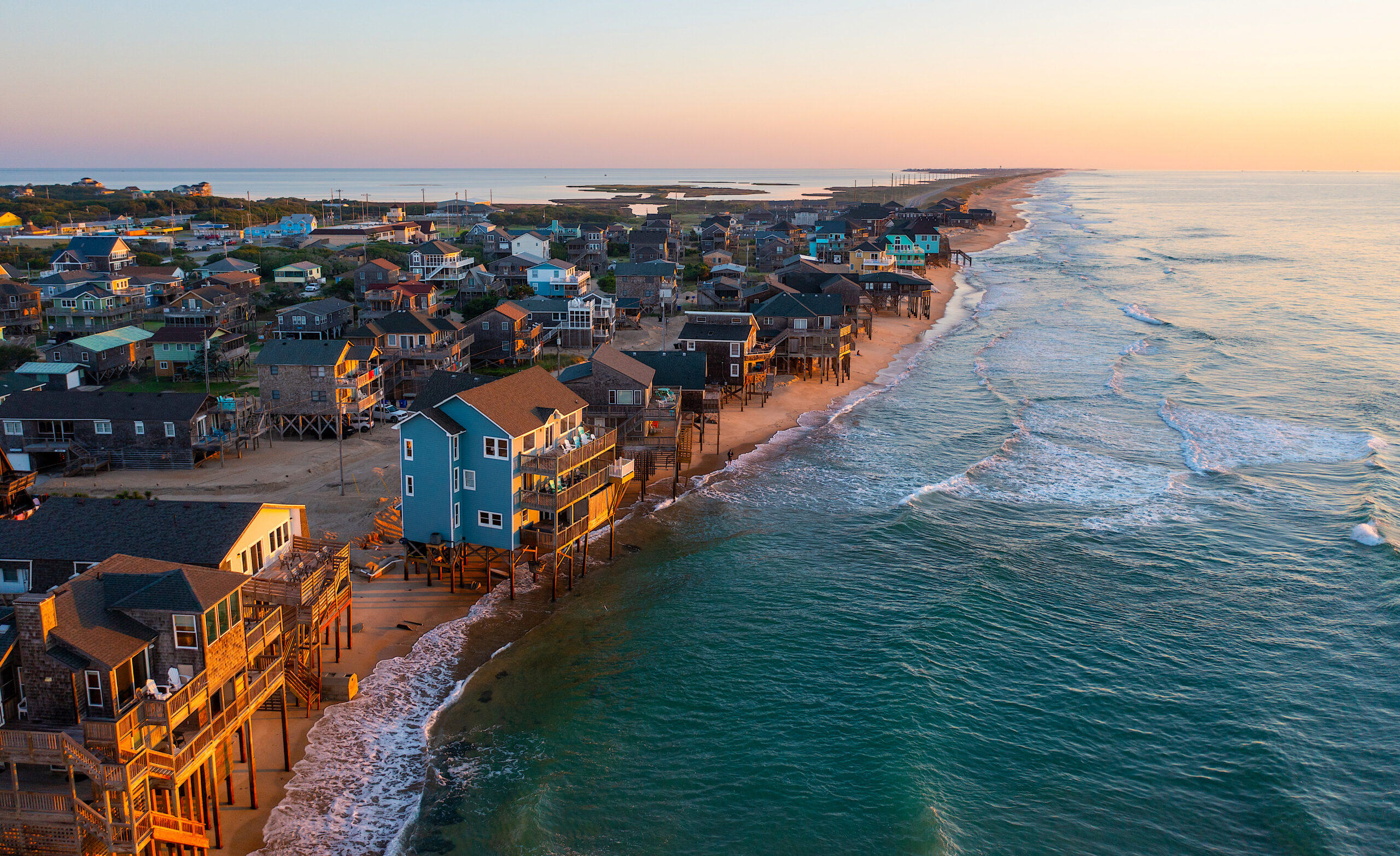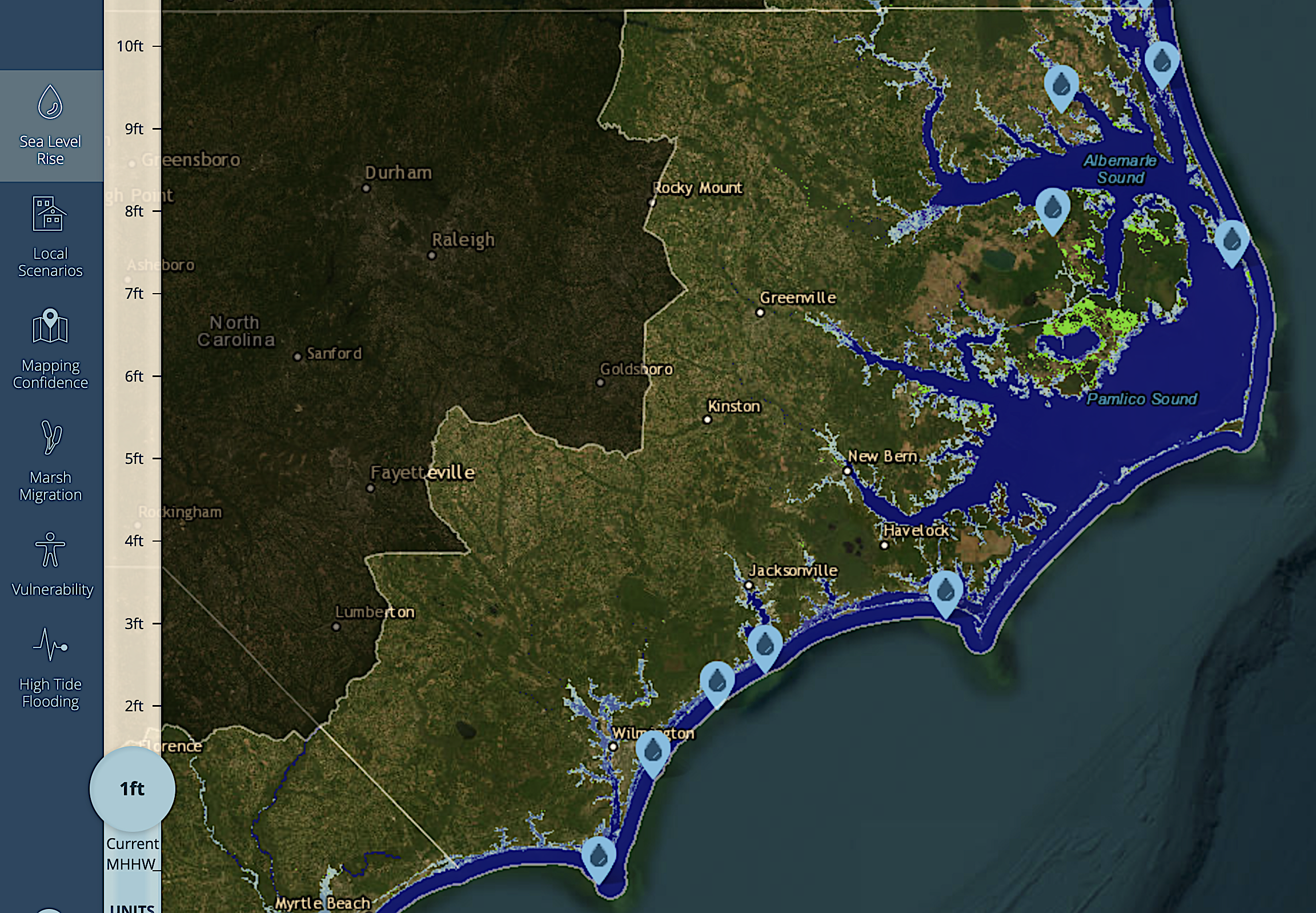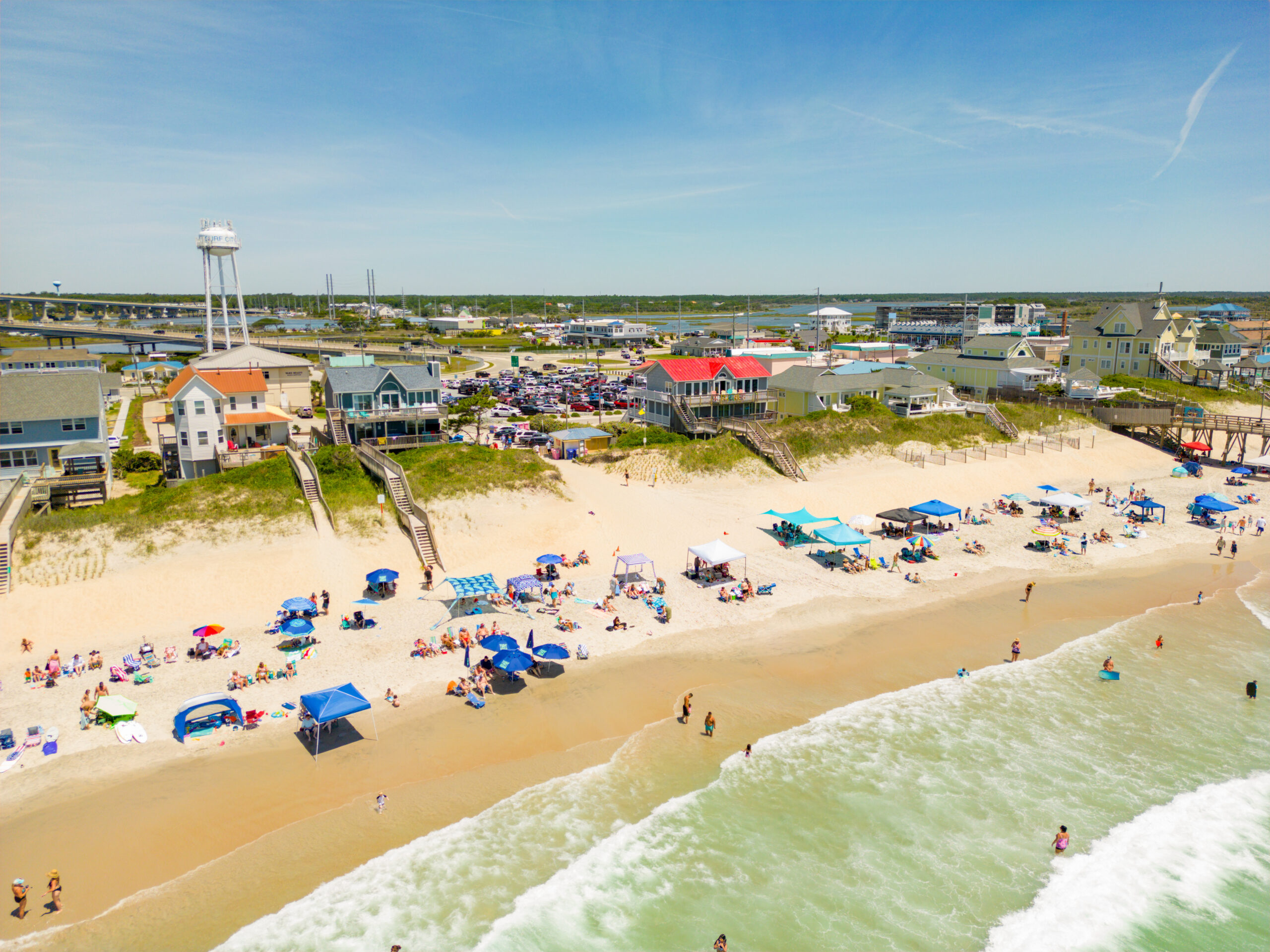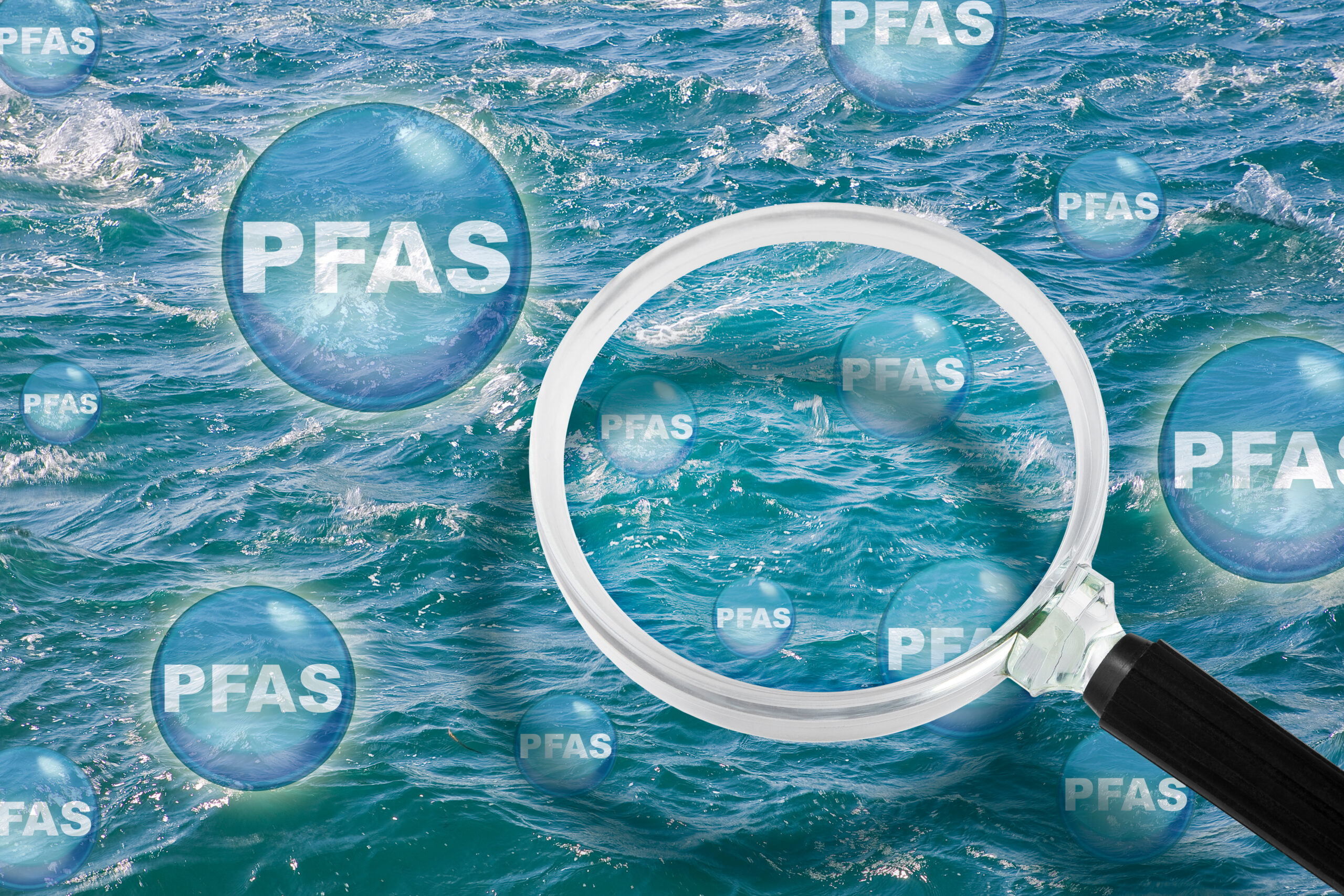Vital Signs: Seven More Feet?
Excerpts from NOAA’s Sea Level Rise Technical Report

Projections show that U.S. sea levels will increase the most along the East Coast and Gulf Coast — and that a failure to curb emissions could raise waters up to seven feet by the end of the century.
Tens of millions of people in the United States and hundreds of millions globally live in areas that are at risk of coastal flooding. Rising sea levels, along with sinking lands, will combine with other coastal flood factors — storm surge, wave effects, river flows, and heavy rains — to significantly increase the exposure of coastal communities, ecosystems, and economies.
Sea level rise threatens infrastructure necessary for local jobs, regional industries, and public safety, such as roads, subways, drinking water supplies, power plants, oil and gas wells, and sewage treatment systems. Long-term sea level rise also will affect the extent, frequency, and duration of coastal flooding. High-tide flooding events that occur only a few times a year now could occur once a month, or once a week, in the coming decades.
These same water level changes might also increase coastal erosion and groundwater levels. Elevated groundwater levels can lead to increased rainfall runoff and compromised underground infrastructure, such as public utilities, septic systems, and structural foundations. Higher water levels also mean deadly and destructive storm surges, wave impacts, and rainwater are unable to drain from homes and businesses.

NOAA’s Sea Level Rise Technical Report offers projections and information to help communities assess potential changes as they strive to adapt to sea level rise.
Here are three key projections from the report.
The Next 30 Years of Sea Level Rise
Sea level along the U.S. coastline will rise on average 10 to 12 inches in the next 30 years, which will be as much as the rise measured over the last 100 years. Of all U.S. coastland, the Gulf Coast (14 to 18 inches) and the East Coast (10 to 14 inches) will experience the greatest increases due to changes in both land and ocean height.
More Damaging Flooding
Sea level rise will create a profound shift in coastal flooding over the next 30 years by causing tide and storm surge heights to increase and reach further inland. By 2050, “moderate” (typically damaging) flooding is expected to occur more than 10 times as often as it does today, and local factors can intensify it.
Emissions Matter
About 2 feet of sea level rise along the U.S. coastline is increasingly likely between 2020 and 2100 because of emissions to date. Failing to curb future emissions could cause an additional 1.5 to 5 feet of sea level rise, for a total of 3.5 to 7 feet by the end of this century.
Conclusion
Continuously tracking how and why sea level is changing is an important part of informing plans for adaptation. Scientists’ ability to monitor and understand the individual factors that contribute to sea level rise allows tracking of sea level changes in a way that has never before been possible (e.g., using satellites to track global ocean levels and ice sheet thickness). Ongoing and expanded monitoring will be critical as sea levels continue to rise.
MORE
- Coastwatch on climate change
- NOAA North Carolina Sea Level Rise Viewer
- Adapting Stormwater Management Tool for Coastal Floods
- Coastal County Snapshots Tool
lead image: Buxton, NC. Credit: Kyle Little.
- Categories:


